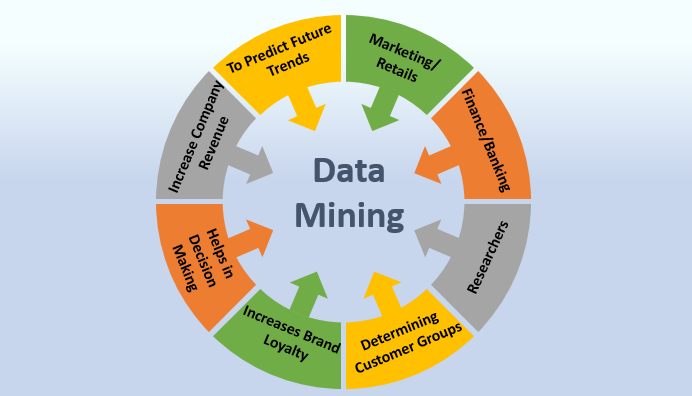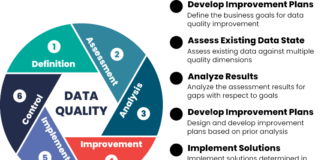Data mining plays a vital role for businesses and organizations in making a strong digital presence. But to do that, you need to dive into present-day data, analyse key trends, and make certain assumptions about what is possibly happening next. In that manner, you will be able to make your long-term business strategy and streamline it. The usefulness of data mining services also depends on how much they’re being used as part of your strategic plan, and how they fit into your organizational objectives.
The Low Down on Predictive Data Mining
Data mining can be defined as the process of analysing big data with the aim of identifying patterns, correlations and trends to derive valuable business information. It takes machine learning, statistical analysis and artificial intelligence to derive meaningful information from data. The size of the global market in the field of big data was estimated at approximately $327 billion in 2023 and is expected to grow to approximately $862 billion by 2030, with a growth rate of 14.9% between 2024 and 2030.
The process of data mining includes:
- Identifying the needs and issues of Organizations or Businesses
- Data collection
- Data Understanding
- Data Preparation
- Modelling
- Evaluation
- Deployment
- Maintenance
Organizations and businesses use data mining methods to improve decision-making processes, identify suspicious behaviours, personalize marketing and enhance operational efficiency. For instance, e-commerce retailers can use data mining to analyse and customize products, consumer behaviour, optimize inventory as well as to increase the supply chain efficiency. Adhering to these data services, online retailers are able to enhance user experiences, boost sales, and simplify operations.
Predictive Data Mining and Business Growth
Predictive data mining services are a pretty big deal when it comes to business strategy. It helps organizations turn data into direction in the following ways:
- Reading the Tea Leaves on Market Trends: Businesses can use predictive models to calculate what is occurring with market trends, as far as consumer preferences or market behaviour is concerned. With an advantage on the trends, you can adjust production, pricing, and marketing to the potential prospects.
- Getting to Know Your Customers: Predictive analytics can assist you in knowing what products or services are bound to be attractive to specific customer groups. This facilitates the establishment of a personal experience, customer relationship and customer retention.
- Managing Risk: Predictive tools may be used to identify possible risks, such as loan defaults, supply chain meltdowns, or operational inefficiencies. Early detection of such problems can actually be of help in preventing and minimizing the losses.
- Stocking Your Inventory and Supply Chain: Predictive models help businesses to maintain a leveled balance on stock quantities, forecast demand and prevent overproduction and donations. All that translates to increased efficiency and cost reduction.
- Planning for the Future: Predictive data allows organizations a more accurate grip on staffing requirements and to analyse their specific skillset. In that manner, they are able to establish a more stable workforce and are more up to date to the future.
- Making Operations More Efficient: Predictive information can provide a boost to operational efficiency by enabling you to calculate where you should allocate your resources most efficiently.
Applications Across Industries
Predictive data mining has changed the dynamics of operations in most industries. It is flexible enough to be useful to both companies with high turnover and smaller enterprises.

- Retail: Businesses can use predictive models to predict demand, optimize inventory levels and plan certain promotions that are attractive to customers.
- Healthcare: The analysis of patient data helps hospitals predict the admission rate, schedule the treatment and efficiently plan to get and manage resources.
- Finance: Predictive models allow banks and other lenders to evaluate credit risks and predict outcomes on investment performance.
- Manufacturing: The data-driven maintenance schedules enable companies to anticipate bottlenecks in production and avoid machine failures.
- Telecommunications: Providers analyse the usage details to predict customer churn and optimize service plans to fulfill the expectations of the users.
In all the scenarios, predictive data mining can be used to reduce uncertainty, lower the cost and improve performance results.
Final Thoughts
Predictive data mining is significant in assisting business organizations to use data to steer development and success over the long term. It enhances decision making, customer knowledge and operational efficiency because it changes information into focal knowledge. With more industries such as retail, finance and manufacturing integrating predictive analytics, it can contribute to the creation of smarter and more flexible business strategies.




